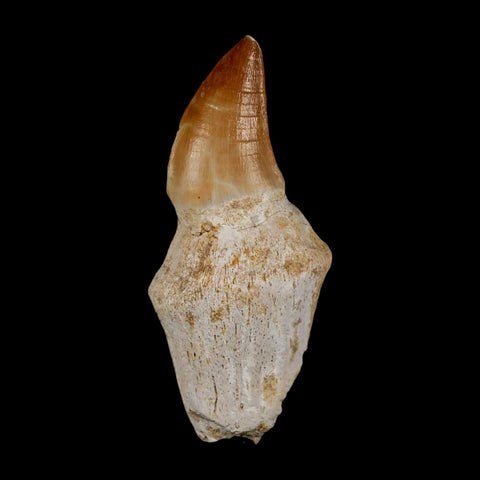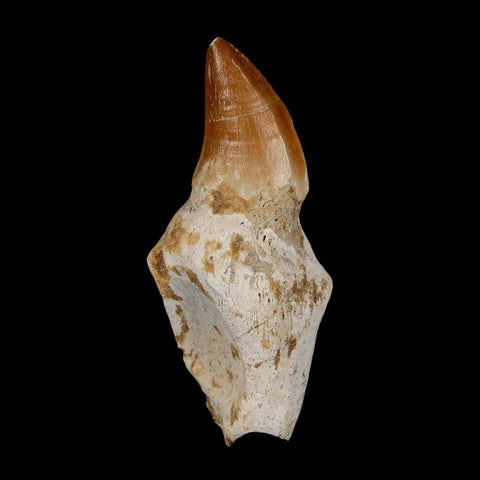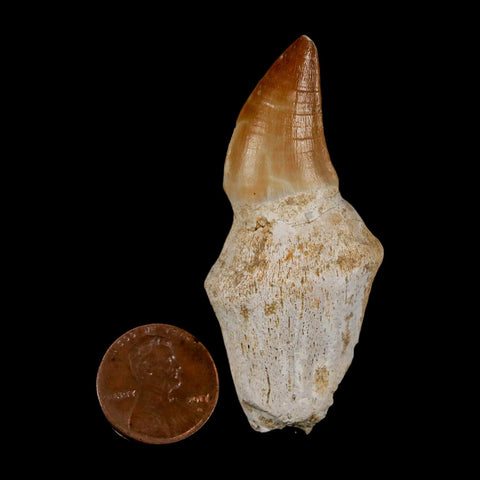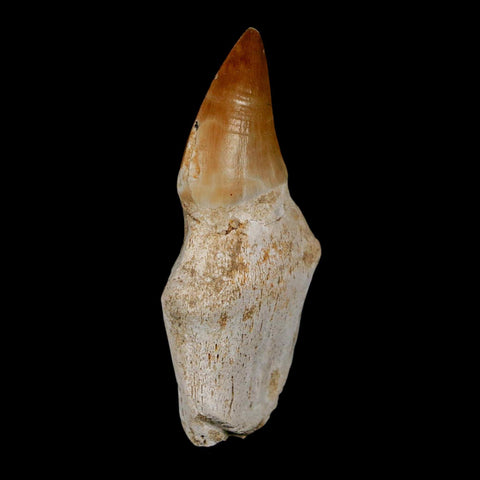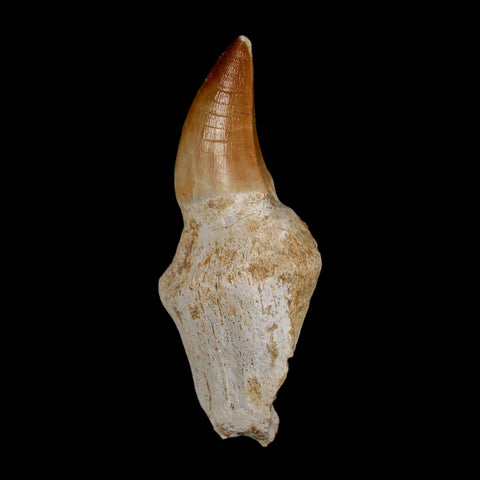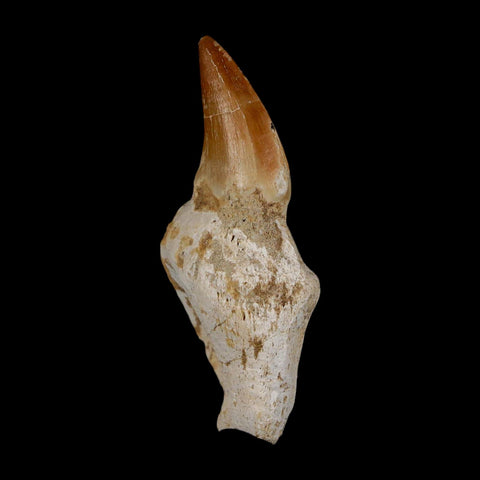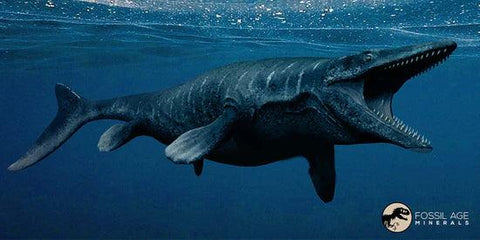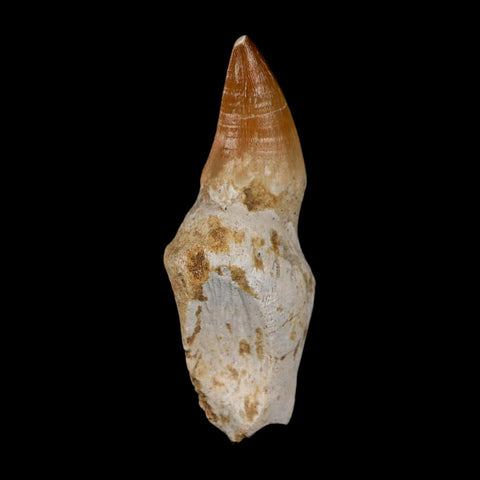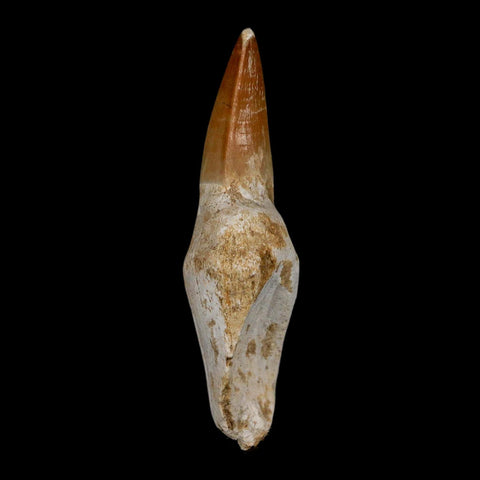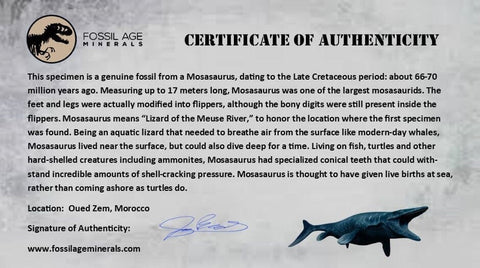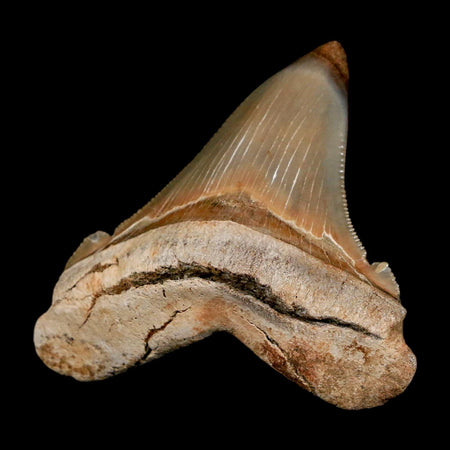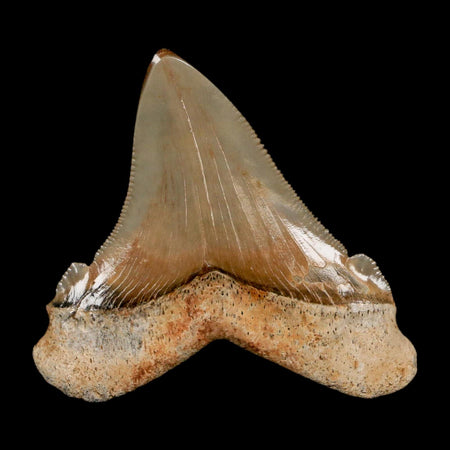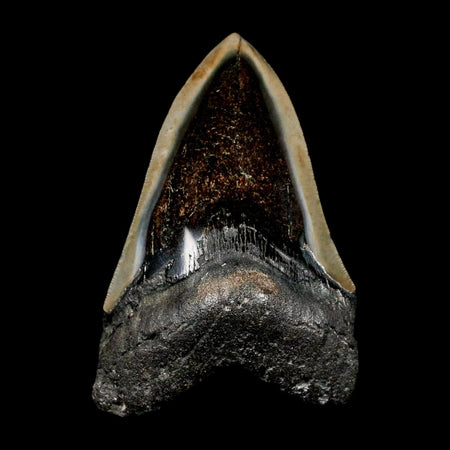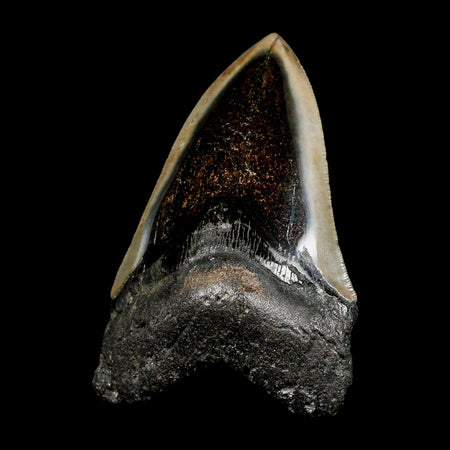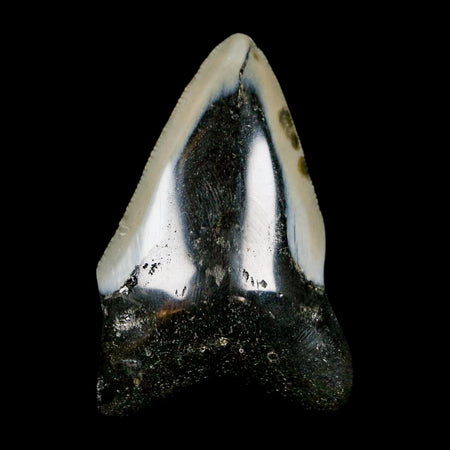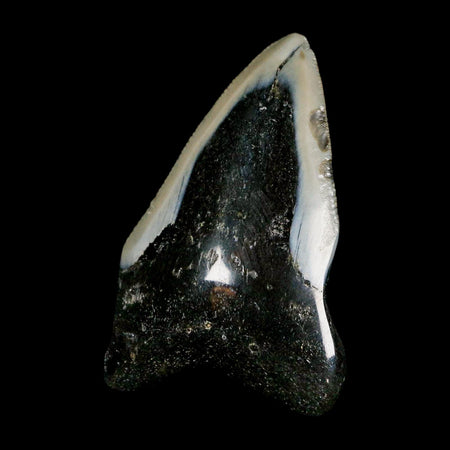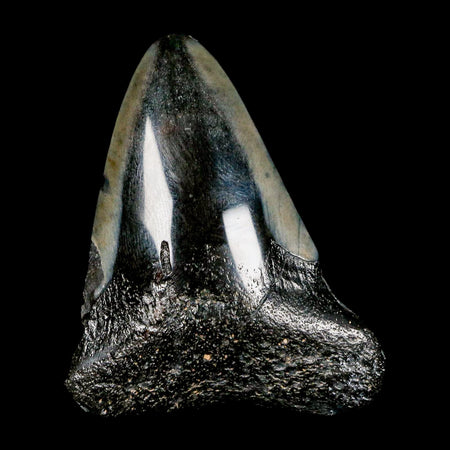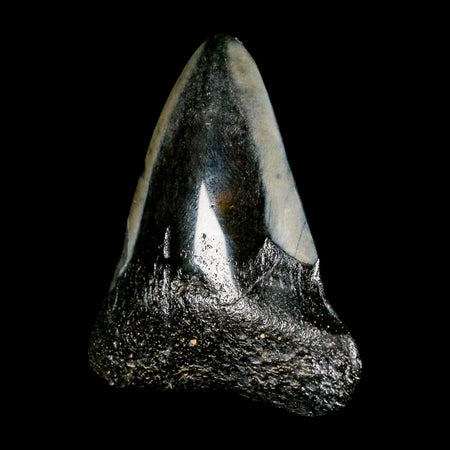2.4" Mosasaur Prognathodon Anceps Fossil Tooth Rooted Cretaceous Dinosaur Era COA
Location: Oued Zem, Morocco
Weight: 0.5 Ounces
Dimensions: 2.4 Inches Long, 1.1 Inches Wide, 0.6 Inches Thick
Comes with a Certificate of Authenticity.
The item pictured is the one you will receive.
100 - 66 Million Years old, Upper Cretaceous, Maastrichtian Epoch.
Name: Prognathodon (Forejaw tooth).
Named By: Dollo - 1889.
Diet: Carnivore.
Size: Depending upon the species, Prognathodon could range between 6 to possibly just under 14 meters in length.
Known locations: Fossil locations suggest a worldwide distribution, but especially well- known in Europe and North America.
Time period: Campanian to Maastrichtian of the Cretaceous.
Prognathodon was a late Mosasaur that evolved a different predation style, resembling early Triassic placodont reptiles like Placodus. It specialized in eating tough-shelled prey such as shellfish, ammonites, and turtles. For a long time, its diet was speculative, based on teeth and jaw structure, until early 21st-century Canadian discoveries revealed its full body and diet. One specimen showed turtle and ammonite fossils in its stomach area, along with a 160-centimeter fish, indicating it was an opportunistic predator despite its specialization. Its robust, heavy jaw could withstand high bite forces from strong jaw muscles. Its teeth, capable of crushing with serrations for shearing flesh, are highly specialized. Bony rings around the eye sockets suggest adaptations for deep-water diving, helping the eyes resist pressure when hunting ammonites. The shift toward this diet among mosasaurs, typically apex predators, remains uncertain. Possible reasons include intense competition forcing dietary changes, a decline in large prey populations, or the opportunity to exploit abundant resources. Notably, Globidens is another mosasaur with similarly large, rounded, crushing teeth, indicating a shared adaptation.

Please be aware of the nature of fossils:
Being buried under the ground for millions of years under intense pressure can be harsh. Rarely does a fossil emerge completely intact and perfect. Most fossils require some restoration, and some are even modified by humans to improve their appearance. Moroccan workers are highly skilled at uncovering and preserving these natural treasures, though natural cracks are often visible on the surface. These cracks are part of the fossil’s natural charm and are not seen as flaws.


